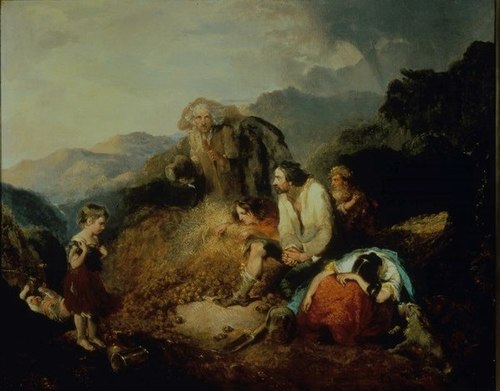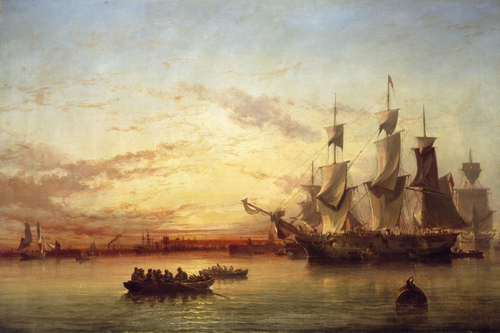Noiser
The Potato Famine: A Tragedy That Shaped Modern Ireland
Play Short History Of... The Irish Potato Famine
The Great Famine, often called the Irish Potato Famine, was one of the most devastating events in Irish history. Between 1845 and 1852, it led to the death of approximately one million people and the emigration of at least another million. But what caused it? And how did it shape Ireland and its people?
The Reliance on the Potato
By 1840, the potato, introduced to Ireland by Sir Walter Raleigh, had become the staple food for most of the country’s population. This was particularly true for the rural poor, who depended almost entirely on the crop for sustenance. The potato was nutritious, calorie-rich, and could be grown on small plots of land, making it ideal for tenant farmers.

Ireland’s population had increased rapidly in the decades preceding the famine, from about 4 million in 1800 to over 8 million by 1845. This growth placed pressure on available land and resources. Many families lived in extreme poverty, renting small plots from English landlords and surviving on what they could grow themselves. This over-reliance on a single crop, combined with the socio-economic vulnerabilities of the rural population, made Ireland particularly susceptible to agricultural disaster.
The Blight Strikes
In 1845, a fungal disease called Phytophthora infestans, commonly known as potato blight, began to spread across Ireland. The blight caused potatoes to rot rapidly, both in the ground and in storage. About one-third of the potato crop was lost that year, but the worst was yet to come. In 1846, the blight struck again with greater ferocity, destroying nearly the entire harvest. The pattern continued in subsequent years, causing widespread starvation and destitution.

The failure of the potato crop would not have been so catastrophic had there been food alternatives available. Unfortunately, most of Ireland's fertile land was used to grow crops and raise livestock for export, primarily to Britain. While people starved, large quantities of food left the country, a point that remains deeply controversial and painful in Irish memory.
The amount of food being exported is shocking. In 1846, the exportation of cattle increased, as did massive amounts of eggs, seafood, and dairy products. Approximately 90 million eggs were being exported to Britain every year.
Kristina Kinealy, Director of Ireland's Great Hunger Institute at Quinnipiac University in Connecticut
British Government Response
The response of the British government, which ruled Ireland at the time, has been widely criticised for its indifference. Prime Minister Sir Robert Peel led initial relief efforts, importing Indian corn from the United States and setting up public works programs. However, Peel's successor, Lord John Russell, adopted a more laissez-faire approach, keen to cut public spending to garner support ahead of an impending general election.
In 1847, known as "Black '47", the situation reached its most dire point. Soup kitchens were established briefly, but many were overwhelmed by demand. Public works schemes were poorly managed, and wages were too low to allow families to purchase sufficient food. Workhouses, intended to provide relief, were overcrowded and rife with disease.
In July of 1847, the British government extended the Irish Poor Law, designed to provide assistance to those in most need. But, there was a catch. The government in London decided that the money for all this must come from Ireland itself.
What the British government effectively was saying was, even though you are part of a United Kingdom, we are no longer going to subsidise your poverty and your starvation. It has to be paid for from local Irish taxation, which, of course, was disastrous.
Kristina Kinealy, Director of Ireland's Great Hunger Institute at Quinnipiac University in Connecticut
Emigration and the Irish Diaspora
Faced with starvation, poverty, and homelessness, many Irish people fled the country. Between 1845 and 1855, over two million people emigrated, mainly to North America and Britain. Emigration was a desperate and dangerous option—many so-called "coffin ships" were overcrowded and unsanitary, leading to high mortality rates during the journey.

The exodus transformed the cultural and demographic makeup of Ireland and planted the seeds of a vast Irish diaspora. Cities like Boston, New York, Liverpool, and Toronto became home to significant Irish communities. Though often met with discrimination and hardship abroad, these communities eventually thrived and maintained a strong sense of identity and solidarity rooted in the shared trauma of the famine.
Social and Political Consequences
The famine left deep scars on Ireland's social and political fabric. It accelerated the decline of the Irish language, as English became more dominant among emigrants and survivors. Cultural traditions like poetry, music and dancing died away, too. Traditional rural communities were devastated, and many regions never recovered their pre-famine population levels.
Politically, the famine intensified resentment toward British rule and fueled the rise of Irish nationalism. The perception of abandonment and exploitation galvanised movements for independence in the late 19th and early 20th centuries. Figures like Charles Stewart Parnell and the group Young Ireland often referenced the famine as a symbol of British misrule and a justification for self-governance.
It was only in 1997 that British Prime Minister Tony Blair made a statement expressing remorse for the British government’s inaction during the famine.
Memory and Legacy
Today, the Irish Potato Famine is commemorated in Ireland and among Irish communities worldwide. Memorials, such as the Famine Memorial in Dublin and the Irish Hunger Memorial in New York, honour the dead and the displaced. The famine is taught in Irish schools and remains a central part of national identity and historical consciousness.

The famine was a watershed moment in Irish history—one that revealed the devastating impact of inequality, colonialism, and political inaction in the face of human suffering.
Mary Robinson, the president of Ireland, said that Irish people have an informed consciousness, which gives them a moral responsibility to help other people. I do think Irish people are always at the forefront of generosity and helping other people who are suffering.
Kristina Kinealy, Director of Ireland's Great Hunger Institute at Quinnipiac University in Connecticut
